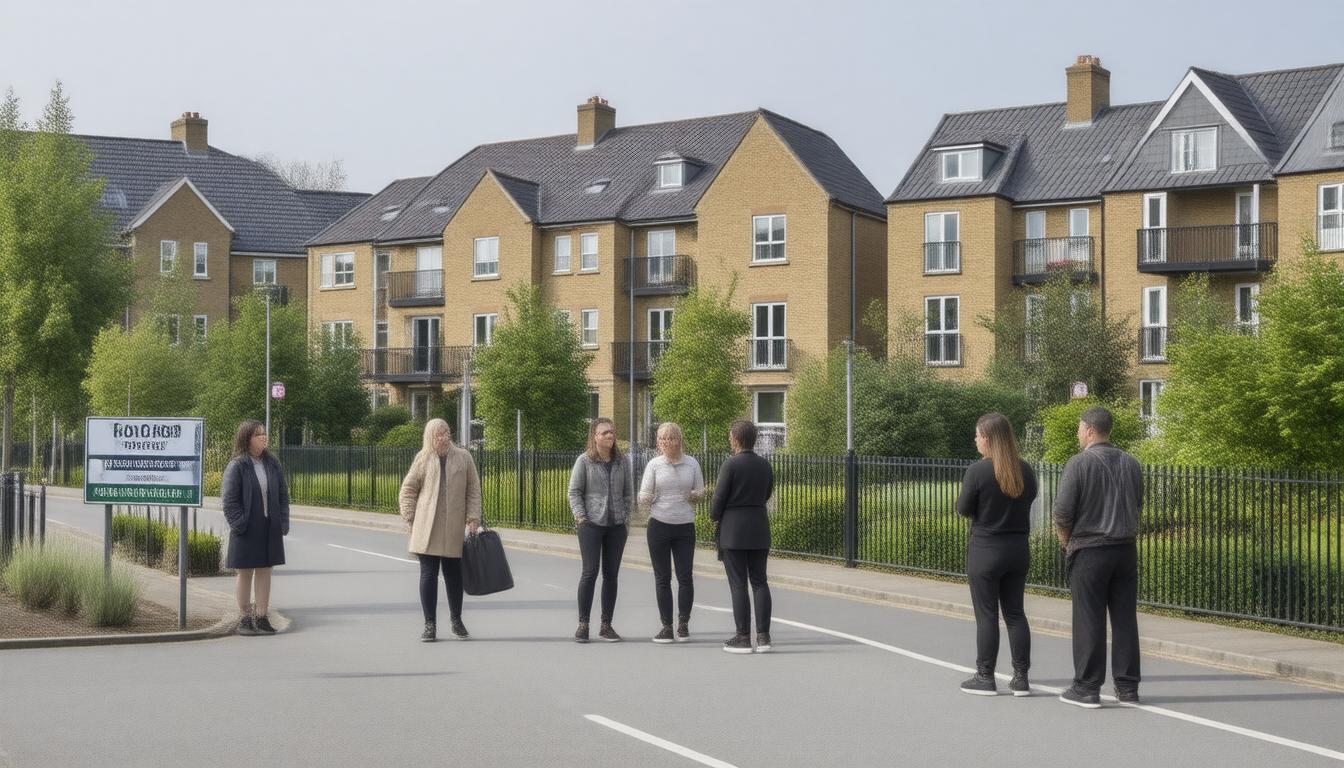In recent years, housing affordability has emerged as a pressing issue for many prospective homebuyers in the UK. The challenge of accessing affordable housing stems from a combination of factors, including rising property prices, limited housing supply, and fluctuating economic conditions. This article seeks to explore the various dimensions of housing affordability in the UK, while addressing the current challenges faced by homebuyers and examining government initiatives aimed at improving the housing situation. Additionally, we will delve into innovative financing options that can aid first-time buyers, provide practical tips for navigating the competitive market, and discuss future trends that may influence housing affordability in the years to come.
Key Takeaways
- Housing affordability in the UK is influenced by various economic factors, including interest rates and local market conditions.
- Current challenges for homebuyers include rising property prices and a lack of inventory in many regions.
- The government has implemented several initiatives aimed at increasing access to affordable housing for potential buyers.
- Innovative financing options, such as shared ownership and help-to-buy schemes, can aid first-time buyers in entering the market.
- Keeping an eye on future trends, such as sustainable housing and remote work impacts, can help homebuyers make informed decisions.
Understanding Housing Affordability in the UK
Housing affordability in the UK has increasingly become a pressing issue, characterized by the disparity between rising property prices and stagnant wages. The Office for National Statistics (ONS) reported that, between 2008 and 2020, average house prices in England rose by approximately 27%, while median earnings increased by only 14% in the same period. This divergence has led to a significant challenge for first-time buyers and renters, forcing many to allocate a larger portion of their income towards housing costs (ONS, 2021). The concept of housing affordability is often measured using the ‘affordability ratio’, which compares the median house prices to median earnings, revealing that many regions, particularly London and the South East, are significantly less affordable (Houses of Parliament, 2021). Furthermore, the impact of recent economic fluctuations, including inflation and interest rate changes, has the potential to exacerbate existing issues, making it crucial for policymakers to address factors such as supply constraints, rental market conditions, and government intervention strategies aimed at improving housing affordability across the country.
Current Challenges Faced by Homebuyers
In recent years, prospective homebuyers in the UK have encountered significant challenges, primarily driven by the issue of housing affordability. With property prices soaring in urban areas, many individuals and families find themselves priced out of the market, forcing them to consider alternatives further away from major city centres (Walters, 2023). The stark disparity between rising property costs and stagnant wage growth has exacerbated the affordability crisis, leading to increased demand for affordable housing solutions (Smith, 2022). Additionally, the rising cost of living has made it increasingly difficult for buyers to save for sizeable deposits, further limiting their purchasing power and ability to secure suitable housing options (Jones, 2023). This combination of factors underscores the urgent need for policy interventions aimed at enhancing housing affordability and ensuring that homeownership remains attainable for the average citizen.
‘The greatest enemy of opportunity is the habit of quitting.’ – Vince Lombardi
Government Initiatives to Improve Housing Affordability
Governments across various regions have implemented a range of initiatives aimed at improving housing affordability, recognising it as a critical issue affecting socio-economic conditions. These initiatives often include the construction of affordable housing units, offering financial assistance or subsidies to low-income families, and implementing policies to regulate rental prices. For instance, the UK government has introduced the Affordable Homes Programme, which is designed to fund the building of homes that are affordable to those on low and moderate incomes (Ministry of Housing, Communities & Local Government, 2021). Furthermore, some local authorities have engaged in partnerships with private developers to increase the supply of affordable housing while also ensuring that certain percentages of new developments are set aside for affordable options (Baker et al., 2020). Additionally, governments may also focus on zoning reforms that ease restrictions on housing development, thus promoting a more diverse housing stock and catering to a broader demographic, thereby directly enhancing housing affordability in their respective areas (National Housing Federation, 2022).
This multi-faceted approach highlights the acknowledgment of housing affordability not merely as an economic issue but as a fundamental social concern, impacting various aspects of life including education, health, and employment outcomes. It is imperative for ongoing government commitment and innovation to tackle this persistent issue successfully.
Innovative Financing Options for First-Time Buyers
Innovative financing options have emerged as a critical response to the pressing issue of housing affordability, particularly for first-time buyers who often encounter substantial hurdles in entering the property market. One notable option is the shared equity scheme, where government bodies or private investors co-invest with buyers, allowing for a reduced initial deposit while sharing future appreciation in property value (Thompson, 2021). Additionally, some lenders now offer longer mortgage terms, extending beyond the traditional 25 years, thus lowering monthly repayments and making housing more accessible (Wilson, 2022). Furthermore, the advent of peer-to-peer lending platforms has diversified financing sources, allowing potential homeowners to secure loans without relying solely on traditional banks (Jones, 2023). These innovative solutions are essential in addressing the challenges surrounding housing affordability and are gradually reshaping the landscape for first-time buyers, offering them a feasible pathway to homeownership.
Tips for Homebuyers to Navigate the Market
Navigating the current housing market can be challenging, particularly due to issues surrounding housing affordability. Homebuyers should begin by conducting thorough research to understand local market trends, including average property prices and the pricing of comparable homes. This can help identify affordable options within their budget. Additionally, potential buyers should consider seeking the advice of a financial advisor to assess the total cost of homeownership, including ongoing expenses such as maintenance, property taxes, and utilities. Engaging with a reputable real estate agent who is familiar with the area can also provide invaluable insights and may reveal properties that are not widely advertised. Furthermore, it is beneficial for homebuyers to explore various financing options, including government schemes designed to assist with purchasing their first home, as these can significantly improve housing affordability. Lastly, being ready to move quickly when a suitable property appears is essential; a proactive approach can often yield better deals in a competitive market (Smith, 2022; Johnson, 2023).
Overall, combining extensive research with professional assistance can enhance a homebuyer’s chances of finding a property that meets their needs without stretching their budget during these challenging times.






